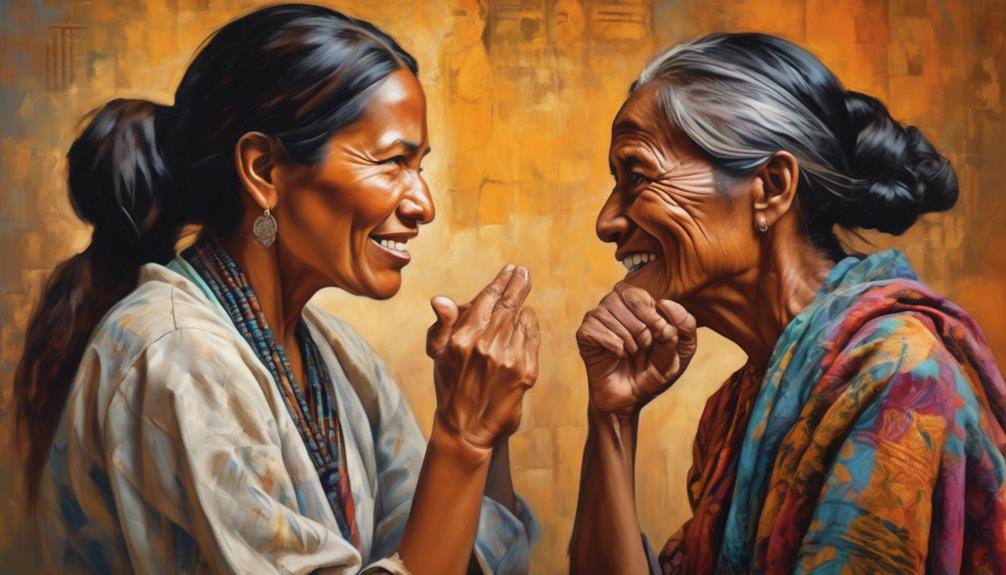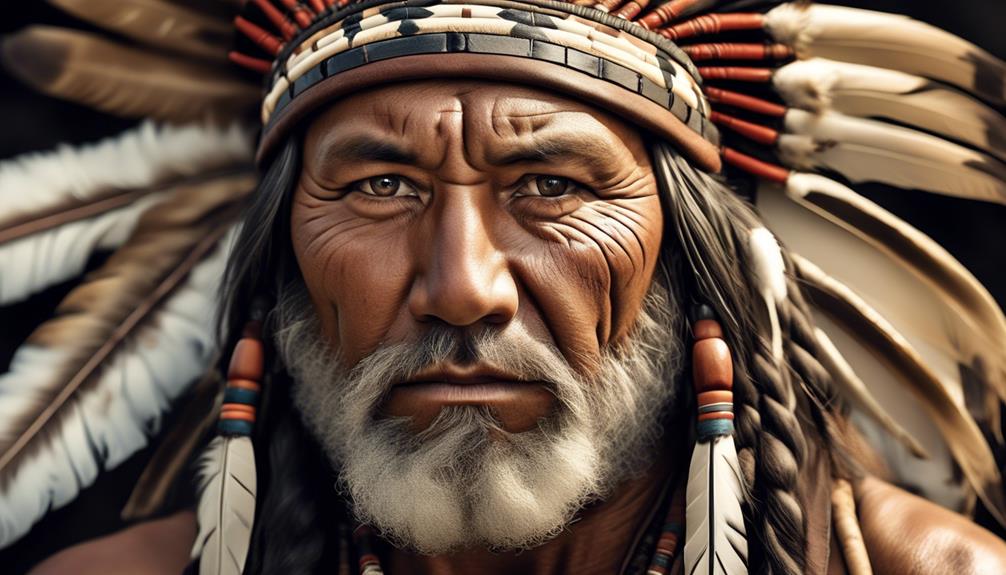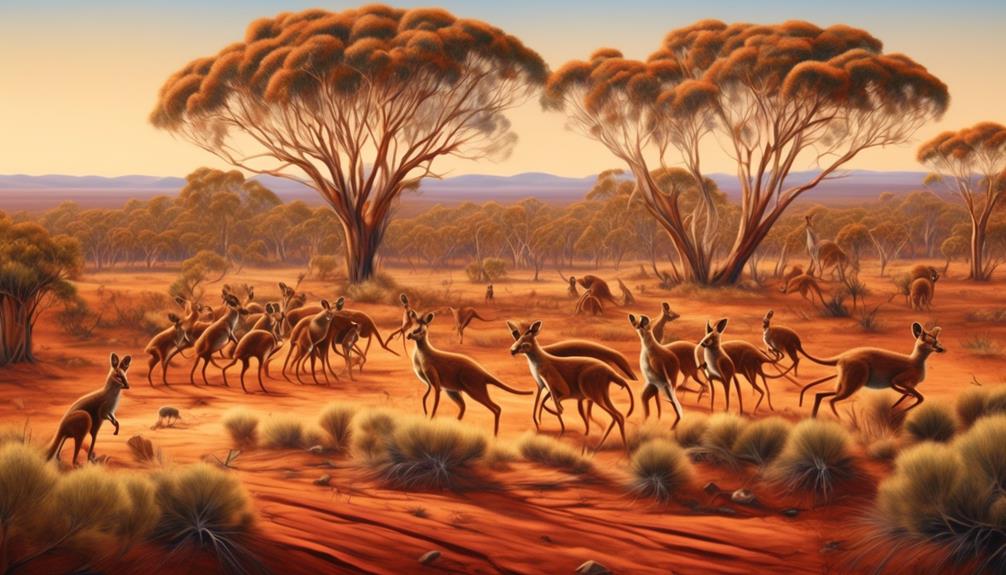You know the feeling of stumbling upon a hidden gem – perhaps a piece of artwork tucked away in a small corner of a gallery, captivating you with its beauty and cultural significance. That’s the allure of Aboriginal art, a world rich in stories, traditions, and unparalleled craftsmanship.
As you explore the world of Aboriginal artists, you might find yourself drawn to the works of Emily Kame Kngwarreye, Clifford Possum Tjapaltjarri, and others, each with their own unique style and narrative.
But what makes these artists the most collectable? What sets them apart from the rest?
Key Takeaways
- Emily Kame Kngwarreye, Clifford Possum Tjapaltjarri, Rover Thomas, and Queenie McKenzie are highly sought after by collectors and art enthusiasts.
- These artists captured the cultural and spiritual essence of the Australian landscape through their artwork.
- They used bold colors and intricate patterns in their creations, making their art visually striking.
- Bill Whiskey Tjapaltjarri depicted Dreamtime stories, sacred sites, and ancestral beings in his artwork.
Emily Kame Kngwarreye
Emily Kame Kngwarreye, a pioneering Aboriginal artist, revolutionized contemporary Indigenous art with her bold and dynamic abstract paintings. Her artistic legacy is marked by a profound cultural influence, as she drew inspiration from her rich Aboriginal heritage, particularly the Alhalkere country and Anmatyerre culture.
Kngwarreye's abstract art is a testament to her deep connection with the land and her spiritual beliefs, conveying a sense of movement and the ever-changing Australian landscape.
Her works have garnered international recognition, with her pieces exhibited in renowned galleries and collections around the world. Kngwarreye's art transcends cultural boundaries, resonating with audiences globally and showcasing the depth and complexity of Indigenous Australian art. Her innovative approach to abstraction has left an indelible mark on the art world, challenging traditional perceptions and expanding the possibilities of contemporary Indigenous art.
Kngwarreye's influence continues to shape the landscape of Aboriginal art, inspiring a new generation of artists to explore the intersection of tradition and innovation. Her legacy serves as a testament to the enduring power of art in preserving and celebrating cultural heritage.
Clifford Possum Tjapaltjarri
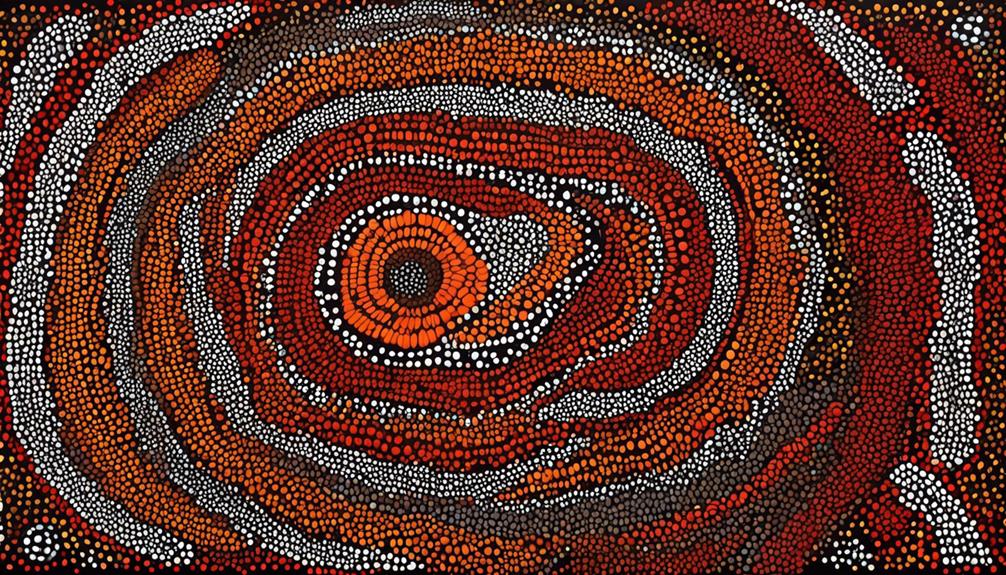
Renowned for his profound influence on contemporary Indigenous art, Clifford Possum Tjapaltjarri's artistic legacy is marked by his innovative approach to capturing the spiritual and cultural significance of the Australian landscape. Tjapaltjarri, a leading figure in the Western Desert art movement, has left an indelible mark on the art world. His masterful use of traditional iconography and storytelling, combined with a modern aesthetic, has had a lasting cultural impact, resonating with audiences globally.
Tjapaltjarri's work has garnered international recognition, with his paintings being exhibited in renowned galleries and museums worldwide. This recognition has significantly contributed to the market value of his art, making it highly sought after by collectors and investors. His pieces have achieved record prices at auctions, solidifying his status as one of the most collectible Aboriginal artists.
The enduring appeal of Tjapaltjarri's art lies in its ability to transcend cultural boundaries and communicate the rich heritage and spirituality of the Indigenous Australian experience. His artistic legacy continues to inspire and captivate art enthusiasts, further cementing his position as a seminal figure in the realm of Indigenous art.
Rover Thomas
Rover Thomas, a pivotal figure in the contemporary Indigenous art movement, is celebrated for his profound influence on capturing the cultural and spiritual essence of the Australian landscape. His artistic techniques, often characterized by bold use of color and intricate patterns, reflect the deep cultural significance of the land to Indigenous communities. Thomas's ability to infuse his paintings with stories of ancestral connections to the land has made his work highly sought after by collectors and art enthusiasts alike.
| Artistic Techniques | Cultural Significance | Notable Works |
|---|---|---|
| Bold use of color | Deep ancestral ties | *Cyclone Tracy's Country* |
| Intricate patterns | Spiritual significance | *All That Big Rain Coming from Top Side* |
| Layered textures | Connection to the land | *Ruby Plains Massacre* |
Thomas's paintings often depict the topographical features of the Kimberley region in Western Australia, where he spent much of his life. His unique ability to translate the spiritual significance of these landscapes onto canvas has cemented his legacy as one of the most collectible Aboriginal artists of his time.
Queenie McKenzie

A significant figure in the contemporary Indigenous art movement, Queenie McKenzie's artistic legacy is defined by her profound portrayal of the cultural and spiritual significance of the Australian landscape. Her work reflects a deep connection to her Gija heritage, capturing the essence of the land and its stories through a unique artistic lens.
- Cultural Influence: McKenzie's art is deeply rooted in her Gija culture, with her paintings serving as a visual narrative of her people's traditions, spirituality, and connection to the land.
- Artistic Techniques: McKenzie's use of bold, earthy colors and intricate patterns, often depicting the Kimberley region, evokes a sense of timelessness and reverence for the land.
- Recognition and Impact: Her art has garnered widespread recognition and has had a profound impact on the contemporary Indigenous art scene, contributing to the greater appreciation and understanding of Aboriginal culture.
- Legacy: McKenzie's legacy extends beyond her artistic contributions; she was also a respected cultural leader, passing on knowledge and traditions to younger generations.
- Market Value: McKenzie's artworks have become highly sought after, with collectors valuing the cultural significance and artistic mastery encapsulated in her paintings.
Bill Whiskey Tjapaltjarri
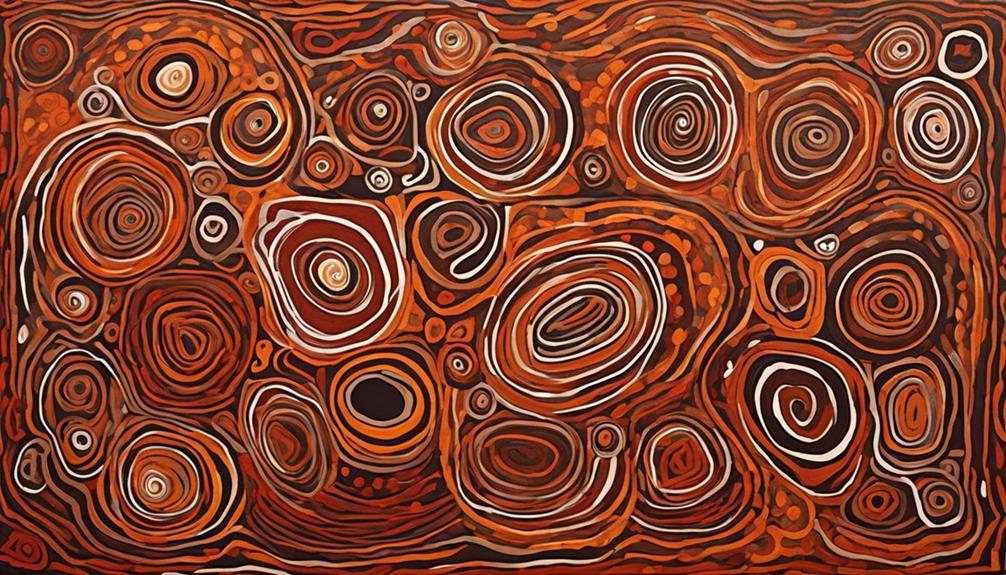
Bill Whiskey Tjapaltjarri's distinctive artistic style captures the essence of the Aboriginal cultural heritage through vibrant colors and symbolic storytelling. His work is characterized by intricate dot painting, an artistic technique that has been passed down through generations and holds deep cultural significance. Tjapaltjarri's pieces often depict Dreamtime stories, sacred sites, and ancestral beings, creating a visual narrative that connects the viewer to the rich history and spirituality of the Aboriginal people.
| Artistic Technique | Cultural Significance |
|---|---|
| Dot Painting | Preserving Tradition |
| Storytelling | Connecting Spirituality |
| Vibrant Colors | Depicting Dreamtime |
| Symbolic Imagery | Honoring Ancestral Beings |
| Intricate Detail | Sharing Sacred Stories |
Tjapaltjarri's art has garnered significant market demand and international recognition, making him a highly sought-after artist in the contemporary art world. His pieces are celebrated for their depth of cultural storytelling and the mastery of his artistic technique. The growing appreciation of Aboriginal art globally has further propelled the demand for Tjapaltjarri's work, solidifying his position as one of the most collectible Aboriginal artists.
Frequently Asked Questions
What Are the Specific Techniques and Materials Used by Each Artist to Create Their Artwork?
To create their artwork, artists use a variety of artistic techniques, such as dot painting, cross-hatching, and rarrk.
Traditional materials like ochre, bark, and natural pigments are commonly employed.
Cultural influences and personal experiences play a significant role in shaping their artistic expression.
These techniques and materials are deeply rooted in the artists' heritage, reflecting their connection to their ancestral lands and the stories passed down through generations.
How Has Each Artist's Cultural Background and Personal Experiences Influenced Their Artistic Style and Subject Matter?
Your inquiry about how an artist's cultural background and personal experiences influence their artistic style and subject matter is crucial for understanding their work. The influence of upbringing on artistic techniques and cultural significance is profound.
Additionally, an artist's personal experiences shape their subject matter, making it a reflection of their unique perspective. This deep understanding of an artist's background and experiences is essential for predicting market trends and assessing the impact of their work.
Are There Any Significant Historical or Cultural Events That Have Had an Impact on the Work of These Artists?
Significant historical events, like colonization and forced assimilation, have deeply impacted the work of these artists.
Cultural influences on art are evident in the themes of resilience, identity, and connection to the land.
Art reflects the enduring impact of these historical events on Aboriginal communities.
Understanding the impact of these events is essential for appreciating the depth and significance of Aboriginal art.
What Are Some Common Themes or Symbols That Appear in the Artwork of These Artists, and What Do They Represent?
Common themes in Aboriginal art often revolve around Indigenous culture and spirituality. Aboriginal symbolism is frequently used to represent connections to the land, ancestors, and Dreamtime stories.
Artistic techniques vary, but dot painting and cross-hatching are common. Materials used can include natural pigments, ochre, and bark.
These themes and symbols serve to preserve and communicate cultural traditions, as well as provide a means for storytelling and connection to the land.
Can You Provide Any Insights Into the Market Value and Trends for the Work of These Artists in the Art World?
In the art world, market trends for Aboriginal artists reflect a growing appreciation for their unique perspectives and cultural influences.
Artistic influences such as traditional storytelling, connection to land, and the Dreaming are gaining recognition, leading to increased market value for their work.
As collectors and institutions recognize the significance of these artists, their pieces are becoming sought after, contributing to a positive trajectory in the market.
Conclusion
In conclusion, the most collectable Aboriginal artists such as Emily Kame Kngwarreye, Clifford Possum Tjapaltjarri, Rover Thomas, Queenie McKenzie, and Bill Whiskey Tjapaltjarri have left an indelible mark on the art world.
Their unique perspectives and cultural significance have made their works highly sought after and prized by collectors.
Their art not only reflects the beauty of their culture but also serves as a powerful reminder of the rich artistic heritage of Indigenous Australians.


